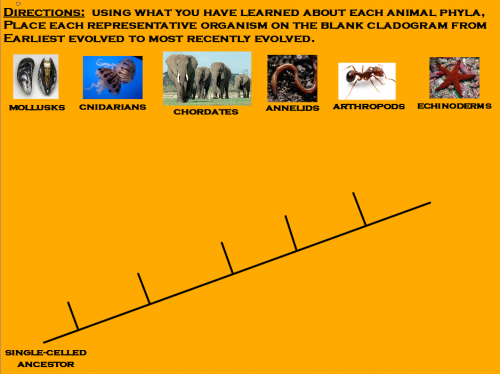Summary
Students worked in groups to research either one of eight major animal phyla OR one of four major plant phyla using resources made available to them at stations in the library. These resources were located at each table for students to use, as well as available using library desktop computers with access to online databases. After completing the research, each student group entered information gathered about the phyla at their station into a shared Google Form, identifying each phyla using their physical characteristics. Each group then used the information from the completed spreadsheet to create a tool called a dichotomous key.
As a final step, students use their dichotomous keys, along with evidence provided by the teacher, to classify a “mystery” organism (e.g., the Sea Cucumber) according to its specific animal or plant phyla.
TIPC Ratings
Students were given multiple pre-selected resources, (ie. books and encyclopedias) and were also taught to use online databases, to collect their research. Each table of students was assigned a major plant or animal phyla. Students filled out a Google excel spreadsheet with specific questions relating to characteristic of their assigned plant or animal phyla. to be researched.
Within their groups, students designated tasks to each person as they collected work. All members of a group were able to access the form and fill in the fields as research was gathered. Once their phyla form was completed, they chose as a group how they wanted to design their dichotomous key.
The challenge of having students create their own dichotomous key (authentic task) was designed to promote synthesis of their research. Students were supported as they acquired, evaluated, and applied information. Once the student groups had completed their dichotomous keys, they were to use the keys to decide how to classify the Sea Cucumber. Following their analysis and placement decision on the key, students had to justify the reason for their selection of kingdom and phylum, based on their key. Students were expected to go back to the Google doc spreadsheet to use that information in verifying their responses, then enter their responses in the Google response spreadsheet.
When given the opportunity to create their dichotomous key, students were allowed choices in how to design it and where to design it. In order to create a dichotomous key, students had to look at which characteristics between phyla were similar and different. Once they saw what characteristic was common or different, they could decide to create a dichotomous key.





